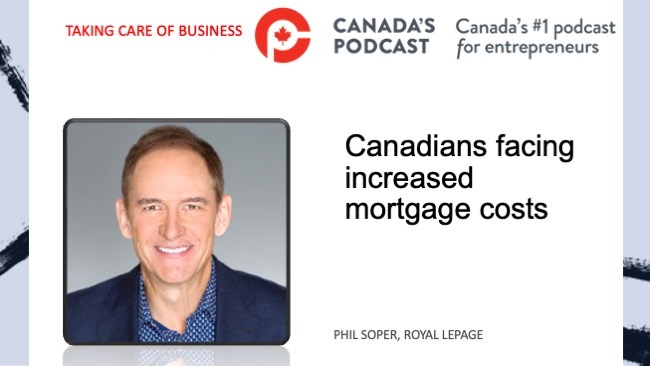Statistics Canada reported Friday that the nation’s unemployment rate rose 0.2 percentage points to 5.7% in October, marking the fourth monthly increase in the past six months.

iPrice Group
Employment was little changed in October (+18,000; +0.1%) and the employment rate fell 0.1 percentage points to 61.9%, said the federal agency.
Employment was up in construction (+23,000; +1.5%) and information, culture and recreation (+21,000; +2.5%) in October. This was offset by decreases in wholesale and retail trade (-22,000; -0.7%) and manufacturing (-19,000; -1.0%), it said, adding that employment increased in four provinces in October, led by Alberta (+38,000; +1.5%), while it declined in Quebec (-22,000; -0.5%).
Total hours worked were virtually unchanged in October but were up by 2.1% on a year-over-year basis.
On a year-over-year basis, average hourly wages rose 4.8% (+$1.56 to $34.08) in October, following an increase of 5.0% in September.
“Since January 2023, employment growth has averaged 28,000 per month, while growth in the population aged 15 and older in the LFS has averaged 81,000 per month. The employment rate in October (61.9%) was down from the recent peak of 62.5% recorded in January 2023, but was little changed from October 2022 (62.0%). The employment rate has varied between 61.9% and 62.0% since July 2023,” said StatsCan.
“Since April, the (unemployment) rate has increased by 0.7 percentage points, after holding steady at a near record-low 5.0% from December 2022 to April 2023. There were 1.2 million unemployed persons in October, an increase of 171,000 (+16.2%) since April. Among those who were unemployed in September, 60.1% remained unemployed in October—a greater proportion than 12 months earlier (55.4%) (not seasonally adjusted), and an indication that job seekers are facing more difficulties finding employment than a year ago.
“As unemployment has increased and job vacancies have decreased in recent months, the labour force participation rate—the proportion of the population aged 15 and older that was either employed or looking for work—has remained relatively high. The participation rate in October (65.6%) was unchanged from the previous month and up 0.2 percentage points on a year-over-year basis.”
James Orlando, Senior Economist with TD Economics, said the Canadian jobs market is moving back towards balance following two strong monthly prints.
“The 18k monthly job gain once again failed to keep up with the 58k gain in the population-driven boost to the labour force. The “is this a recession?” debate will continue to swirl, with the unemployment rate rising by 0.7 percentage points since April. While this certainly isn’t a recession as there is no depth, duration, or breadth, weakness is present. The number of unemployed workers keeps rising, while cyclically sensitive private sector hiring has been retreating for months,” he said.
“When the Bank of Canada decided to hold rates at 5% last week, it did so because of a notable slowing in economic momentum. While this has been apparent in reduced consumer spending and a weakening housing market, the labour market left the BoC wanting more. But, given the rise in the unemployment rate and continued weakening in the underlying details, today’s report is likely to make the BoC feel more comfortable about its decision to hold. Looking forward, we are expecting this employment trend to continue, while high rates and persistent inflation make the case for the BoC to remain on hold in December.”
Doug Porter, Chief Economist with BMO Economics, said: “While the headline job gain was uneventful, make no mistake that the underlying picture for Canada’s labour market is softening. Exhibit A on that front is the grinding rise in the unemployment rate, from a steady 5% level early this year to 5.7% now. While wages are responding only slowly to the cooldown, it is likely only a matter of time before they slow more meaningfully with headline inflation ebbing and job vacancies disappearing. This will keep the Bank of Canada pinned more fully to the sidelines, although we still believe that rate relief remains a distant prospect.”

Mario Toneguzzi
Mario Toneguzzi is Managing Editor of Canada’s Podcast. He has more than 40 years of experience as a daily newspaper writer, columnist, and editor. He was named in 2021 as one of the Top 10 Business Journalists in the World by PR News – the only Canadian to make the list)
About Us
Canada’s Podcast is the number one podcast in Canada for entrepreneurs and business owners. Established in 2016, the podcast network has interviewed over 600 Canadian entrepreneurs from coast-to-coast.
With hosts in each province, entrepreneurs have a local and national format to tell their stories, talk about their journey and provide inspiration for anyone starting their entrepreneurial journey and well- established founders.
The commitment to a grass roots approach has built a loyal audience on all our social channels and YouTube – 500,000+ lifetime YouTube views, 200,000 + audio downloads, 35,000 + average monthly social impressions, 10,000 + engaged social followers and 35,000 newsletter subscribers. Canada’s Podcast is proud to provide a local, national and international presence for Canadian entrepreneurs to build their brand and tell their story.





